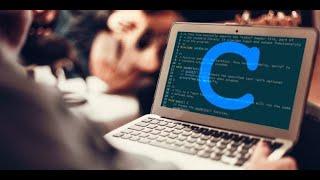
Changing the Output result Look in C Language Programming..
Subscribe our channel for new updates...
textcolor() function takes color code as it's parameter, and this color is taken by cprintf() function and the parameter(string) passed to cprintf is printed in the color given by textcolor() function.
C Practical and Assignment Programs-Pattern Printing 1
In this video we are going to write a program to print a pattern in form of right angled triangle consisting of "*". We are going to use nested for loops ie one loop inside another.The full description of question is provided below. Now this program is written in C programming language but will work in C++.Fell free to provide you suggestion.
In C, there are many different ways for a program to communicate with the user. ... What if, we want to achieve some output.
This is quiet reassuring, you won't be the first programmer whose program takes ... Strings will be discussed later but for now remember: if you print a string using the ... The most obvious is that scanf has to change the values stored in the parts of ... The only exception to this rule is the %c specifier which always reads in the ...
Below is a simple C program that illustrates the important programming constructs ... Blocks are used as the body in constructs like function, if-else and loop, which ... In almost all of the C programs, we use #include stdio.h to include the input/output stream ... It is called variable because you can change the value stored.
"C Programming Language" redirects here. For the book, see The C Programming Language.C as in the letter c) is a general-purpose, imperative computer programming language, supporting structured programming, lexical variable scope and recursion, while a static type system prevents many unintended operations. By design, C provides constructs that map efficiently to typical machine instructions, and therefore it has found lasting use in applications that had formerly been coded in assembly language, including operating systems, as well as various application software for computers ranging from supercomputers to embedded systems.
C was originally developed by Dennis Ritchie between 1969 and 1973 at Bell Labs,[6] and used to re-implement the Unix operating system.[7] It has since become one of the most widely used programming languages of all time,[8][9] with C compilers from various vendors available for the majority of existing computer architectures and operating systems. C has been standardized by the American National Standards Institute (ANSI) since 1989 (see ANSI C) and subsequently by the International Organization for Standardization (ISO).
C is an imperative procedural language. It was designed to be compiled using a relatively straightforward compiler, to provide low-level access to memory, to provide language constructs that map efficiently to machine instructions, and to require minimal run-time support. Despite its low-level capabilities, the language was designed to encourage cross-platform programming. A standards-compliant and portably written C program can be compiled for a very wide variety of computer platforms and operating systems with few changes to its source code. The language has become available on a very wide range of platforms, from embedded microcontrollers to supercomputers.
C is a powerful general-purpose programming language. It is fast, portable and available in all platforms.
If you are new to programming, C is a good choice to start your programming journey.
This is a comprehensive guide on how to get started in C programming language, why you should learn it and how you can learn it.
Thanks For Watching..
Coment Us,Share Us,Like And Subscribe Our Channel...
See You Next Time...Take Care Of Yourself...Good Byeee...
Also Keep Connected With us On the Following Links...
https://www.linkedin.com/in/muhammad-bilal-noshahi-1b9a49166/
https://twitter.com/BilalNosha
https://www.patreon.com/sdrecords
http://mbilalnoshahi.blogspot.com/
https://www.facebook.com/youme007009/
textcolor() function takes color code as it's parameter, and this color is taken by cprintf() function and the parameter(string) passed to cprintf is printed in the color given by textcolor() function.
C Practical and Assignment Programs-Pattern Printing 1
In this video we are going to write a program to print a pattern in form of right angled triangle consisting of "*". We are going to use nested for loops ie one loop inside another.The full description of question is provided below. Now this program is written in C programming language but will work in C++.Fell free to provide you suggestion.
In C, there are many different ways for a program to communicate with the user. ... What if, we want to achieve some output.
This is quiet reassuring, you won't be the first programmer whose program takes ... Strings will be discussed later but for now remember: if you print a string using the ... The most obvious is that scanf has to change the values stored in the parts of ... The only exception to this rule is the %c specifier which always reads in the ...
Below is a simple C program that illustrates the important programming constructs ... Blocks are used as the body in constructs like function, if-else and loop, which ... In almost all of the C programs, we use #include stdio.h to include the input/output stream ... It is called variable because you can change the value stored.
"C Programming Language" redirects here. For the book, see The C Programming Language.C as in the letter c) is a general-purpose, imperative computer programming language, supporting structured programming, lexical variable scope and recursion, while a static type system prevents many unintended operations. By design, C provides constructs that map efficiently to typical machine instructions, and therefore it has found lasting use in applications that had formerly been coded in assembly language, including operating systems, as well as various application software for computers ranging from supercomputers to embedded systems.
C was originally developed by Dennis Ritchie between 1969 and 1973 at Bell Labs,[6] and used to re-implement the Unix operating system.[7] It has since become one of the most widely used programming languages of all time,[8][9] with C compilers from various vendors available for the majority of existing computer architectures and operating systems. C has been standardized by the American National Standards Institute (ANSI) since 1989 (see ANSI C) and subsequently by the International Organization for Standardization (ISO).
C is an imperative procedural language. It was designed to be compiled using a relatively straightforward compiler, to provide low-level access to memory, to provide language constructs that map efficiently to machine instructions, and to require minimal run-time support. Despite its low-level capabilities, the language was designed to encourage cross-platform programming. A standards-compliant and portably written C program can be compiled for a very wide variety of computer platforms and operating systems with few changes to its source code. The language has become available on a very wide range of platforms, from embedded microcontrollers to supercomputers.
C is a powerful general-purpose programming language. It is fast, portable and available in all platforms.
If you are new to programming, C is a good choice to start your programming journey.
This is a comprehensive guide on how to get started in C programming language, why you should learn it and how you can learn it.
Thanks For Watching..
Coment Us,Share Us,Like And Subscribe Our Channel...
See You Next Time...Take Care Of Yourself...Good Byeee...
Also Keep Connected With us On the Following Links...
https://www.linkedin.com/in/muhammad-bilal-noshahi-1b9a49166/
https://twitter.com/BilalNosha
https://www.patreon.com/sdrecords
http://mbilalnoshahi.blogspot.com/
https://www.facebook.com/youme007009/
Комментарии:
UN AÑO DE VOS PODÉS EL PODCAST, EPISODIO ESPECIAL (CON: TATIANA FRANCO) |Vos podés - EP 148|
VOS PODÉS, EL PODCAST!
G‘AROYIB ROHIB Uzbek tilida tarjima kino Ғаройиб роҳиб узбек тилида таржима кино
RETRO OLAM Tarjima kinolar
Общие упражнения Ушу Тайдзицуань
Вадим Галкин
Сеанс исцеления всемогущим именем Бог. Практическое занятие.
АЛЕКСАНДР ТАУ - ЦЕЛИТЕЛЬ, ПРОРОК И УЧИТЕЛЬ🌷🌿
Шон МС Ишки хозира 2017
TJK prank
Bloomberg Wealth: Dmitry Balyasny
David Rubenstein
Wie ist die Qualität wirklich bei BlueBrixx? | Vergleich mit LEGO, Analyse & Klemmkraft-Test!
Brickstory - Dein Wissen über Klemmbausteine!


























